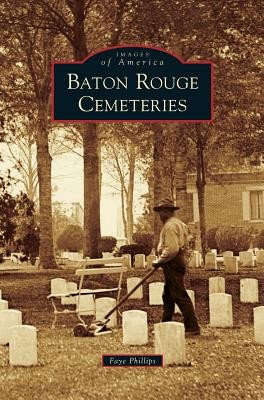
- We will send in 10–14 business days.
- Author: Faye Phillips
- Publisher: Arcadia Publishing Library Editions
- Year: 2012
- Pages: 130
- ISBN-10: 1531662021
- ISBN-13: 9781531662028
- Format: 17 x 24.4 x 1 cm, hardcover
- Language: English
- SAVE -10% with code: EXTRA
Reviews
Description
For many immigrants to Baton Rouge, being buried in the highlands of their European homes was a dream. Recognizing that this desire was unlikely to come to fruition, they christened the bluff above the Mississippi River south of the town as "Highland" and established Highland Cemetery in 1819. The military fort had a burial ground; churches established cemeteries; owners, family members, and slaves were buried on the plantations; towns offered municipal cemeteries and paupers' plots; and families distant from towns created family cemeteries.
Magnolia Cemetery was established for white citizens in 1852. Sweet Olive and the Lutheran Cemeteries were for free people of color and slaves. St. Joseph's Catholic Cemetery, established in 1826, did not discriminate on race but on religious affiliation, as did the Jewish cemetery. Civil War Union soldiers were separated from Confederates buried in Magnolia Cemetery and interred in the Baton Rouge National Cemetery. In 1921, Roselawn Park Cemetery represented the beginning of cemeteries as business. Beautiful statuary, elaborate tombstones and memorials, unique monuments to the departed, and lush gardens accentuate Baton Rouge's cities of the dead.
EXTRA 10 % discount with code: EXTRA
The promotion ends in 19d.22:31:30
The discount code is valid when purchasing from 10 €. Discounts do not stack.
- Author: Faye Phillips
- Publisher: Arcadia Publishing Library Editions
- Year: 2012
- Pages: 130
- ISBN-10: 1531662021
- ISBN-13: 9781531662028
- Format: 17 x 24.4 x 1 cm, hardcover
- Language: English English
For many immigrants to Baton Rouge, being buried in the highlands of their European homes was a dream. Recognizing that this desire was unlikely to come to fruition, they christened the bluff above the Mississippi River south of the town as "Highland" and established Highland Cemetery in 1819. The military fort had a burial ground; churches established cemeteries; owners, family members, and slaves were buried on the plantations; towns offered municipal cemeteries and paupers' plots; and families distant from towns created family cemeteries.
Magnolia Cemetery was established for white citizens in 1852. Sweet Olive and the Lutheran Cemeteries were for free people of color and slaves. St. Joseph's Catholic Cemetery, established in 1826, did not discriminate on race but on religious affiliation, as did the Jewish cemetery. Civil War Union soldiers were separated from Confederates buried in Magnolia Cemetery and interred in the Baton Rouge National Cemetery. In 1921, Roselawn Park Cemetery represented the beginning of cemeteries as business. Beautiful statuary, elaborate tombstones and memorials, unique monuments to the departed, and lush gardens accentuate Baton Rouge's cities of the dead.


Reviews